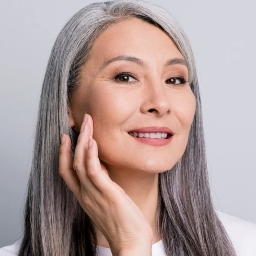Mohs Surgery
Conveniently located to serve the areas of Los Angeles and Santa Monica, CA

Mohs surgery is a procedure that effectively removes certain types of cancerous skin cells. If you have a cancerous lesion caused by sun damage or other factors, this treatment scrapes away both cancerous cells and the roots that allow them to burrow into the skin.
Mohs surgery is offered at Dermatology Institute & Skin Care Center in Santa Monica, California, by board-certified dermatologist Dr. Paul Yamauchi. Dr. Yamauchi has helped thousands of patients improve the health of their skin for more than 25 years, expertly providing Mohs surgery with minimal scarring and virtually no downtime. Dr. Yamauchi is recognized by the Mohs Board as a Mohs surgeon with extensive training in advanced closure techniques.
If you suspect you have skin cancer, do not delay in making an appointment for evaluation and possible Mohs surgery. Addressing a skin cancer diagnosis or a suspicious lesion can improve your health and prevent it from developing into a more aggressive form of cancer.
Contact our Santa Monica office or call (310) 829-4104 to schedule an appointment and learn more about the treatments Dr. Yamauchi offers.
Contents
About Mohs Surgery
Skin cancer affects more individuals than any other type of cancer. (1) Mohs surgery can effectively remove cancerous cells to improve your health. Mohs micrographic surgery is especially effective because the techniques for removing the cancerous cells also target the extensions or “roots” of the cells to remove them effectively. (2) Dr. Yamauchi makes precise, discreet incisions and uses an advanced closure technique that results in minimal scarring for a natural appearance. (3)
If you have cancerous cells in delicate facial areas, Dr. Yamauchi takes extra care to remove very thin layers of the affected skin. At each stage, our team will examine the excised skin to determine if any cancer cells remain. At Dermatology Institute & Skin Care Center, this procedure does not require downtime, as Dr. Yamauchi skillfully preserves surrounding tissues for a speedy recovery. Dr. Yamauchi only removes cancerous tissue from the treatment area and preserves healthy tissue.
The procedure is customizable, and Dr. Yamauchi can perform Mohs surgery in any area where skin cancer appears. Since Mohs surgery results in less scarring than traditional surgery, it is especially effective for cancers that affect delicate areas such as the face.
Which Types Of Skin Cancer Does Mohs Surgery Address?
Mohs surgery is effective on the two most common types of skin cancer: basal cell carcinoma (BCC) and squamous cell carcinoma (SCC), as well as early stages of melanoma:
- BCC: Excessive sun exposure can cause this condition, resulting in red, flaky patches of skin, small transparent bumps, or scar-like lesions with a waxy appearance. Basal cell carcinomas grow slowly but can spread into the deep layers of your skin and cause significant tissue damage.
- SCC: Repeated sun and UV light exposure can result in scaly, crusty patches of red skin or small bumps that grow slowly. If not treated, the cancer can spread to nearby tissues, bones, and lymph nodes.
- Melanoma: Melanoma is the most dangerous form of skin cancer. If you have an unusual mole that grows in size, has irregular borders, or changes colors, you need evaluation and treatment right away. If melanoma spreads or extends deep within the skin, you may require chemotherapy or immunotherapy–Mohs surgery alone would not be effective enough in these cases.
Benefits
Mohs surgery is a treatment with several benefits for improving the condition of your skin:
- Targeted treatment: Mohs surgery preserves your healthy tissue by precisely shaving away cancerous cells, resulting in a natural appearance.
- Minimal scarring: Dr. Yamauchi’s Mohs surgery techniques feature pristine sutures and advanced closure techniques.
- Convenient, effective procedure: In many cases, you can achieve results with a single Mohs treatment.
- Minimal downtime: Dr. Yamauchi’s precision and advanced techniques often essentially eliminates any downtime for patients.
Candidates

If you have been diagnosed with skin cancer, you are likely a good candidate for the procedure. Suitable candidates for Mohs surgery are often seeking to address cancerous skin cells associated with basal cell carcinoma, squamous cell carcinoma, or melanoma. Mohs surgery can treat skin cancer on various different areas of the body, such as the face, neck, hands, and more.
If you wish to avoid unsightly scars and a lengthy downtime, Mohs surgery with Dr. Yamauchi can improve your skin without these issues. A personal consultation is necessary to determine whether you are a good candidate for Mohs surgery, or if you would benefit from other treatments.
Personal Consultation
During your consultation at our Santa Monica office, we will ask about your medical history and examine your skin. Dr. Yamauchi will determine the most effective type of treatment for your needs and create a personalized plan.
We offer various dermatology treatments that can further enhance your skin after your Mohs surgery. To learn more, see the blog.
Preparation
Before your appointment, you will receive instructions about how to prepare for Mohs surgery. These often include avoiding medications that cause blood thinning and refraining from smoking if applicable. Following the preparation guidelines you are provided with will help optimize your procedure.
Procedure
During Mohs surgery, you will receive a local anesthetic at the area of your biopsy and suspicious lesion. We will clean and numb the area before Dr. Yamauchi removes the cancerous tissue layer by layer using a scalpel. (3) He processes each layer of removed tissue with special dyes that help determine if the cancer has spread to areas not visible to the naked eye.
If Dr. Yamauchi detects more cancerous cells, he can remove additional layers of tissue until the cancer is gone. After removing all of the cancer, your provider may close the wound with stitches or leave it open to heal on its own. You will return home with specific aftercare instructions to help you minimize scarring and allow the treatment area to heal properly.
Recovery
Fully healing after Mohs surgery can take several weeks, and you may need to follow up with the office to allow Dr. Yamauchi to monitor your progress. However, thanks to Dr. Yamauchi’s advanced techniques that minimize downtime, you can return to most normal activities soon after your treatment. You should avoid sun exposure while your skin heals for the best results. It is important to continue to protect your skin from UV rays after you have healed from your treatment.
Results
After your treatment, you can enjoy a visible improvement in the treatment area over the next few weeks as your skin heals. Removing the cancerous skin cells can have a long-term impact on your skin health because Dr. Yamauchi removes the roots that allow them to continue to grow. Since the treatment permanently removes the cancerous cells, you can enjoy lasting results after Mohs surgery.
Additional Dermatology Treatments
If you suffer from other skin conditions, you may want to consider some of our other beneficial treatments:
- Acne and rosacea: We offer laser treatments that can reduce acne and calm inflammation. Topical treatments can also support your skin barrier.
- Eczema: If you suffer from inflammation, itchiness, rashes, or a scaly appearance from eczema, we can provide medicated shampoos, creams, and oral antihistamines to help you find relief.
- Psoriasis: If you are struggling with a skin disorder that causes large patches of your skin to become discolored and itchy, UV laser treatments can be helpful in managing your symptoms. We can offer oral medications to help you maintain a healthier skin barrier.
Cost of Mohs Surgery in Santa Monica
The cost of Mohs surgery will depend on the severity of your skin condition and the size of the treatment area. There is no need to live with the risk of cancerous cells that could permanently impact your quality of life. Contact our Santa Monica office or call (310) 829-4104 to learn more about how Mohs can help you improve your well-being.
FAQ
Will there be scarring after Mohs surgery?
Dr. Yamauchi’s advanced closure techniques allow for minimal scarring.
Can Mohs surgery be done with local anesthesia?
Yes, Mohs Surgery is typically performed with local anesthesia. This allows patients to remain awake and comfortable during the procedure.
Can cancer cells continue to grow after Mohs surgery?
This procedure effectively removes the roots of cancerous cells from the treatment area so that they cannot grow. If, however, you develop more cancerous cells in the future, we can remove additional layers.
When can I return to normal activities after Mohs surgery?
Dr. Yamauchi’s expert techniques offer patients the benefit of no downtime, meaning you can get back to most of your normal activities soon after your procedure.
References
- Hasan N, Arif Nadaf, Imran M, et al. Skin cancer: understanding the journey of transformation from conventional to advanced treatment approaches. Molecular Cancer. 2023;22(1). doi:https://doi.org/10.1186/s12943-023-01854-3
- Mohs micrographic surgery: a review of indications, technique, outcomes, and considerations. Anais Brasileiros de Dermatologia. Published online March 24, 2021. doi:https://doi.org/10.1016/j.abd.2020.10.004
- Shriner DL, McCoy DK, Goldberg DJ, Wagner RF. Mohs micrographic surgery. Journal of the American Academy of Dermatology. 1998;39(1):79-97. doi:https://doi.org/10.1016/s0190-9622(98)70405-0











